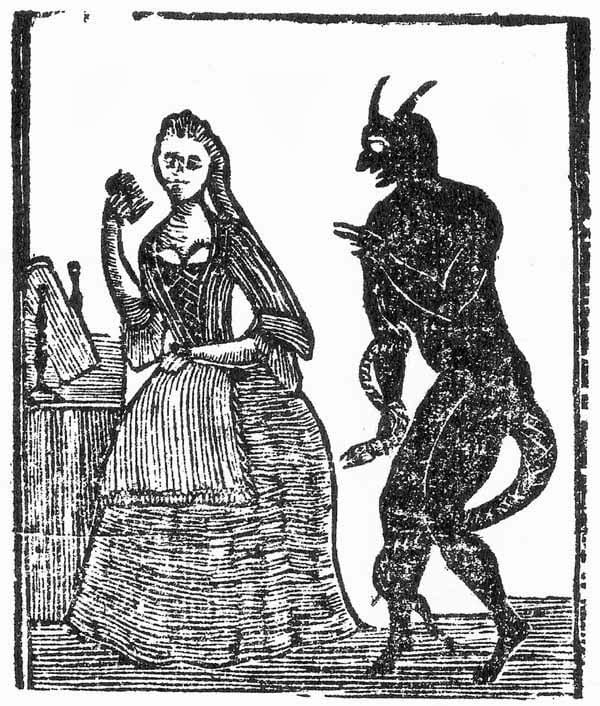Cornwall is proud of its unique culture, and its historic ways of celebrating Christmas are no exception. In this post, we feature 12 fun, interesting, or downright bizarre Cornish customs. Do you know of another? Let us know in the comments below. We wish you all a Nadelik Lowen!

1) St. Stephen’s Revenge
On Feasten Monday (the day after Advent Sunday) and St. Stephen’s Day (26th December), it was a Cornish custom to go out shooting. The latter event apparently stemmed from the story that when St. Stephen was about to break through the bars of his cell, a bird awoke the guards who prevented the escape. Consequently, it became tradition to hunt birds on that date.
2) Customer Loyalty Points
In many Cornish towns, the working class would be able to visit the shopkeepers for whom they were regular customers, and would be rewarded with a tot of gin and a little Christmas cake. In 1859, a collection of shopkeepers in Launceston notified the population that they would no longer honour the tradition, calling it a ‘very unsatisfactory’ custom, although it continued elsewhere for some time.

3) A White Christmas
The Thursday before Christmas Day was known in Cornwall as St. Chiwidden’s Day, or White Thursday. According to tradition, this was the day on which they began to melt down the tin ore (black tin) into its final form of white tin. In reality, there is no St. Chiwidden – the name comes from chi-wadden meaning white house (the name for the smelting room) – but that didn’t stop Cornish miners taking it as a holiday.
| 4) A Jolly Holiday St. Chiwidden isn’t the only made-up saint to feature in Cornish customs. St. Tibb’s Eve was reputed to fall ‘neither before nor after Christmas’, and was an excuse for general merriment and apparently even a day off work with unsuspecting employers. The expression eventually became used to mean never – ‘I’ll get around to it on Tibb’s Eve’. |  |
5) Speed Dating
In the beautiful market town of Launceston, the week after Christmas was reserved for the Giglet Fair – (giglet being a ‘giddy, playful girl’). This was the historic equivalent of speed dating, where eligible country lads went to meet the single girls who would attend in their best dress.
6) Lazy Day
On Childermas, sometimes known as Innocents’ Day (28th December), it was considered very bad luck to begin a journey, or do any type of housework including washing clothes. It can wait!
7) Biblical Luck
On New Year’s eve, it was customary to read one’s fortune by opening the Bible at a random page and pointing at a verse – the gist of the passage would foretell the coming year. Nothing would be lent on New Year’s day, and as little as possible spent or moved out. In some houses, even dust would be swept from the doorstep into the house!
8) Sandy Doorsteps
It is also a Cornish custom to sand your doorstep for good luck. Also, linked to the custom above, sometimes a line of sand would be left- in theory, so that visitors would bring something new into the house without realising.
9) Reeding your Future
Younger couples would also be able to tell their fortunes on New Year’s Eve. Couples would process in silence to gather a reed and some ivy leaves. They would then place the reeds in a communal fire and watch; if the reed did not burn to the end, or worse if it split, then the couple were doomed to break up. The reed that burned the longest and slowest was the winning couple. They would then place an ivy leaf on the fire – it would crack a certain number of times indicating how many years before the marriage would take place. Finally, another ivy leaf would be burnt and this time, the number of cracks would foretell the number of children the couple would have.
10) Old Norse
Elsewhere, particularly in East Cornwall, small groups of young men from the lower classes would go from house to house, begging money to make a feast, singing:
“These poor jolly Wassail boys,
Come travelling through the mire!”
Wassail comes from the Old Norse ves heill – meaning, good health.
11) Cake with a Crunch
Historically, both in Cornwall and further afield, the main Christmas celebrations were held on Twelfth Night, the 6th of January. The Twelfth Day became known as Old Christmas and like our modern Christmas day, was full of feasting. Even livestock were given a double-ration of fodder. Traditionally, a large heavy fruit cake was baked, and into it a wedding ring, a thimble, and a coin were added. The cake was then shared between the guests, and whoever found the wedding ring would be married that year, whoever found the thimble would never be married, and whoever found the coin would die rich.
| 12) Loud Geezers Throughout the 12 days of Christmas, the Cornish would take part in guise dancing (pronounced geeze). Ornate disguises would be worn, and participants would perform traditional Cornish songs and dances, and short plays such as Duffy and the Bucca (devil) – asking for donations. Nowadays, the closest we have to guise dancing is the familiar ‘Obby Oss’ parades in Cornish towns such as Padstow. |  |


